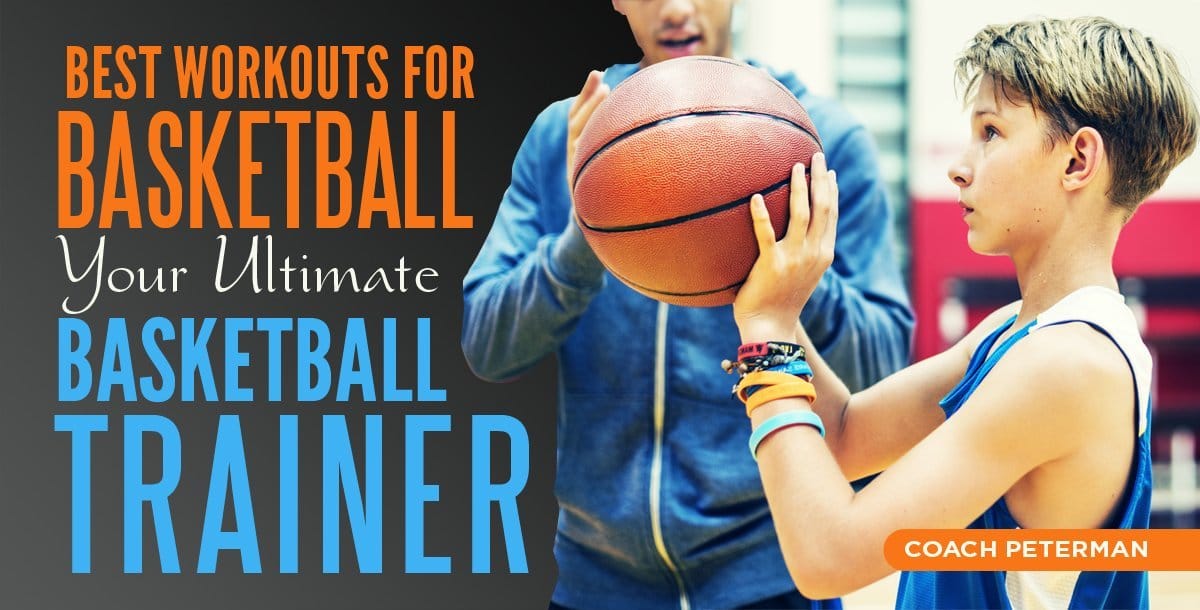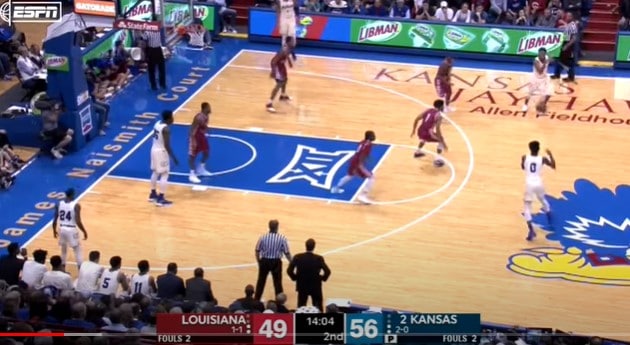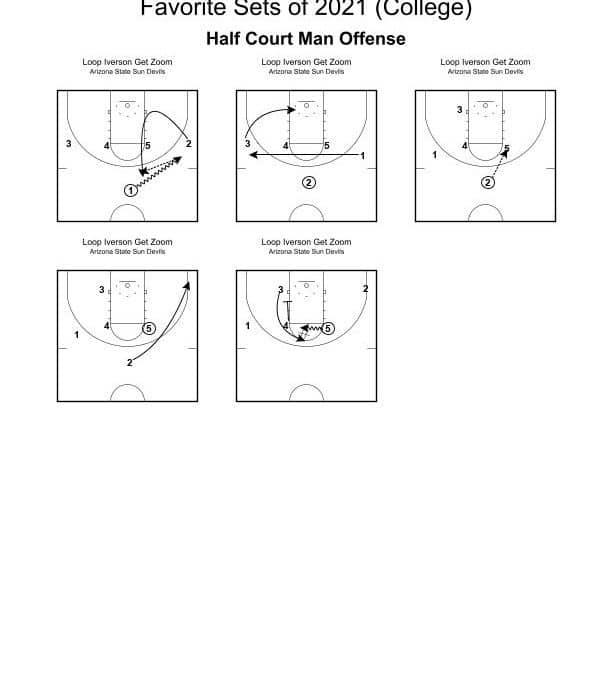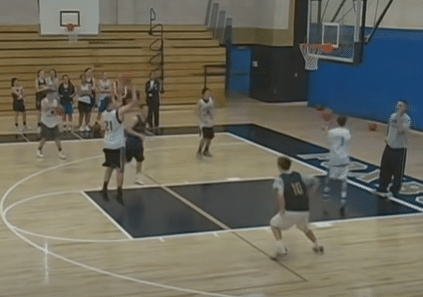Every sport requires discipline, courage, and dedication. Therefore, to be the best, it is necessary to adhere to these principles and a good training routine that suits the level of each athlete or player.
The following selection of best workouts to basketball is designed to guide and optimize the skills of young people in middle, secondary, and university ages, so that they meet their goals and can pose new challenges as they progress through the game.
A team has approved all the exercises that will be considered below specialized in the practice and dynamics of basketball, who design routines according to age, experience and professional level. The list, which extends to one hundred, is based on the following criteria:
- Warm-up
To complete a safe and effective routine, each player must perform a series of training not less than 20 minutes, but not exceed 60 minutes. For basketball, workouts can be divided into dribbling techniques, passes, hand and foot movements, and archery.
- Integration
Basketball is a sport that is played as a team. Starting from there, good training routines should strengthen the identity of the team and foster values such as companionship, loyalty, and tolerance. Reinforcement of these areas sharpens the instincts of each player and helps them anticipate the movements of their teammates.
- Planning
Any coach will find or design the best training system that suits his team’s skills. From this dimension, the general level of the players, the experience, and the duration of the training must be taken into account. In terms of structure, most plans are armed as follows:
- Preheating for 30 or 45 minutes.
- 45 minutes in skill exercises.
- 30 minutes of exercises for offensive and defensive.
- 20 minutes of practice for special movements and tactics of the team.
- 20 minutes for the development of competitiveness.
According to the movements that are executed on the basketball court, this guide includes offensive ability, offensive team ability, athletic development, drills for children and youth.
Offensive Skill/Team Offensive Skill Exercises
For both players and coaches, offensive skill practices are:
- Dribble
The exercises that comprise this section constitute team training practices. For the dribbling exercise, for example, 4 or 5 players are required, who will play in 45 or 60 minutes.
The objectives of the dribbling practice are to learn how to dribble with the erect head, learn to use the fingertips to dominate the ball, learn to bounce the ball with both hands and increase the amplitude of the playing area, ergo, learn to get out of the comfort zone.
- Dribbling System For Beginners
At this stage, players must learn the best workouts for basketball that best suit their amateur level. This consists of familiarizing the movements and learning the techniques for them.
In the “Pirate Dribleo,” for example, the coach assigns the role of “pirates” to two players. The remaining three or four approach the boundaries of the court, each with a basketball in their hands.
Those who have been assigned a ball must dribble in the areas of the court that have been marked. If any of the pirates touches the ball from which he dribbles, he automatically becomes a “pirate,” and takes the ball in the corresponding zone.
The rules are simple: if a pirate touches one of those who dribbles, it passes the turn. The newly turned pirate cannot chase the player from whom he has taken the ball. This exercise is ideal for the development of skills of all ages.
The second game, “What time is it, Mr. Fox?” It is inspired by soccer training, but basketball has adapted it to fit the team in the best possible way.
To execute it, each player needs a ball. The coach is located in the foul line, while the participants are in the bottom line. Once both aspects are resolved, everyone should shout, “What time is it, Mr. Fox,” to which the coach responds “six o’clock.”
This is the starting signal for players to start dribbling directly towards the area where the coach is located, obviously, in six repetitions. Once the rebounds are over, the players ask the question again and, according to the coach’s response, dribble the corresponding amount.
If the coach shouts in response: “It is dinner time,” all players must return to the starting area, and the practice begins again. Given the simplicity of the exercise, it is recommended for children aged 3 to 7 years.
Finally, for the “Coin Drop Relays,” players and their coach will need many coins and egg cartons cut exactly in half.
Two teams of five players who line up in the starting zone are assembled, grouped exactly in the relay area. Upon hearing the “NOW,” each participant runs to the lap line, picks up a coin and runs to where the cardboard is located, dribbling all the time.
The trick is that the player cannot lower the arm from the height of his waist, so he must return to the starting line in that position. This technique, like the previous one, is suitable for application in children whose ages range from 4 to 10 years.
- Dribble System For All Ages
Previous practices mainly involved young children. However, since this game is popular among all ages, other exercises can be considered.
This section, in that sense, covers only the traditional “Dribleo Nocaut.”
This game highlights the development of skills to handle the ball, control the shots, and the overall conditioning of each athlete. This consists of the traditional knockout but taking into account the variations that the dribble offers accordingly.
It is an ideal practice for all ages, from children in the garden to young people in high school. It can be played indoors and outdoors, always taking into account the essential instructions.
Thus, each player starts at the bottom line and dribbles continuously before throwing. Players must line up on the line called “base.” At this point, 3 of the 5 or 6 players have a ball in their hands; and the game starts when the first dribble starts.
This repeats the pattern. The participant dribbles to the free-kick zone, throws the ball and, if he scores, passes the ball to his partner behind. If he fails, the one in the line must dribble to where his partner is, fueling the pressure for him to score. In case he fails, the player is left out or knocked out.
In addition to practice to develop dribbling skills, this exercise is excellent for catapulting personal and group defenses, as well as for strengthening the agility, speed, and ability of all participants.
This exercise belongs to the practice group to develop team offensive ability.
- Ball Management System, For Young People And Adults
This section includes the best workouts for basketball for semi-professionals / professionals. This is a complex set that enters the so-called “Maravich techniques,” in honor of the legendary player Pete Maravich.
This series of exercises consists of a stationary series that helps improve the coordination of the hands and eyes, the speed of the hands, the rhythm on the court and the strength of the hands, wrists, and fingertips.
- System Of Verses Between Two Players
For this exercise, you need an intermediate level in the ball domain. It is a dribbling game against the counter, so it fundamentally develops individual offensive skills.
In the versus the protection and offense with the ball matters. The first movement of this exercise includes the “Back Up and Go,” where the defender adopts an offensive position with an initial dribble and immediately heads towards the basket. It is normal to see this game system after the first-rate of the backup.
The next movement consists of “Back Up and driving towards the line.” The participant runs a backup dribble, leaving the defense behind. Knowing that the other defender is on his way, he always moves in a straight line, although this also depends on the technique used by the coach with each of his players.
Finally, with the “Back Up and Dodge” movement, the backrest squares, leaving the defender behind. This time you should run directly to the basket, always taking care of the chest and waist area. Since it is an offensive move, each player can change direction when he feels threatened.
Exercises For Athletic Development
To condition adult players, it is necessary to exercise three competitions: speed, endurance, and muscles. The following exercises are the most recommended and optimal training modes.
Speed
Among the searches for the best workouts for basketball, you often find skill and speed practices. Both fundamentals can be combined in the following series of exercises.
- Speed Per Drive
In this exercise matters, above all things, the position that the body adapts. How to accelerate according to the initial positions. It also helps improve the mechanics with which the feet, head, and chest move, all fundamental to achieve a clean and effective career on the court.
- “A-Skip” speed
The benefits of this exercise are known for the development of dynamic control and general body posture. It also stands out because it improves the placement of the torso, hip, knee, and feet when running.
Although it is an exercise of low/medium intensity, coaches recommend starting at the minimum level and, little by little, increasing the impression of strength when running. In the A-Skip, the posture will determine the speed of the legs. Of the player.
- The Speed With Straight Leg Limits
This exercise is ideal for boosting the use of the hip and feet as a speed machine. It is a motor training where the muscles do almost all the work. When implementing this move, players need to focus on quick contact with the ground, as well as air suspension levels.
- Speed “Sprint From 5 To 15 Yards.”
In this exercise system, only direct acceleration matters. Of course, there are variations and levels of improvement that players will achieve as they practice, but essentially it is based on the fall of the body and the treatment of the ball.
- Speed, “10 seconds.”
It is a direct stimulus towards speed. Therefore, it is an intense exercise in which the only thing that matters is to run, run, and run the distances marked by the coach. Naturally, the challenge levels increase gradually until the player and the entire team can reach certain distances in a certain time -10 seconds minimum.
Resistance
The list of the best workouts for basketball focused on resistance includes the following segments.
- First segment
At this stage, the player learns to haggle the game situations, to move backward and forward. In the last double exercise, he goes back, reverses and passes the ball to the coach or, failing that, to the player who plays his role.
- Second segment
After passing the coach – or the player who works his position – a direct hit must be made to the basket. Then, you receive a pass for rest.
- Third segment
The next player in the first segment must already be on the move, just like the other players that accompany him.
At this point, the first player gets his rebound, dribbles halfway down the field and moves through the chairs, always zigzagging, never in a straight line. In this way, you can practice movements to change direction, such as crosses, turns, and backs.
- Fourth segment
All players dribble with each other practicing passes from the baseline until they return to the original place. Chest passes and rebounds are also practiced here.
Conditioning
For this exercise, all players need a ball. The coach should order them to form in two columns in front of the gym, and then what positions they want them to adopt with the cones.
The first of the row should dribble halfway down the court, just where the first cone is located. From there, it is attacked to the next cone, at one of the ends, and another dribbling movement is performed. Finally, the exercise culminates with a placement to the half-court line, opening the way to the other participant.
Once the players get a certain number of repetitions towards one end of the court, the coach must change the orientation of the cones; the dribble will be made accordingly to that side. To do this, the cones on each side must be configured so that they can be changed at any time and continue with the exercise.
In the conditioning exercises, these are the dribbling movements that players will want to choose to advance:
- Remove the dribble with the ball in one hand.
- Remove the dribble by crossing the ball in both hands
- Dribble crawling to the sides and towards the corner, always keeping the position of the shoulders square and in the direct direction towards the basket.
- Execute transverse movements.
- Execute defense movements in the back area.
- Execute defense moves out.
- Execute defense movements through the legs.
- Learn to stop and move forward.
- Learn to spin.
- Learn double movements: cross/cross, legs/legs, entry and exit crossing, back/legs, among others.
- Learn triple movements: crossing / legs / back, back / crossings / legs, among others.
Final Tips
To learn how to run the best workouts for basketball, you need to learn to climb. Players of any age can improve their skills as long as they climb to new levels, after their training days. Many fall into the common mistake of executing movements just because when all the aspects described above really matter.
If you want to improve in different aspects, you must take into account the purposes of each of them and cover them fully, without any half tubs. Whether it is offensive or defensive, the player must maintain a broad base and learn to play as a team and individually.
The practice leads to perfection. There are no errors in that formula. When the team repeats certain movements, passes, and game techniques, they improve yes or yes. The record should never be underestimated either in basketball practices or in any sport, in general.
Of course, the practice must be accompanied by good execution and the development of good habits. Sometimes, in the effort to improve by doing inappropriate routines, players can end up with an injury that temporarily incapacitates them. Learning the basics and learning them well is also the key to success.
As for the coaches, the most valuable advice they can follow is the update. Whatever system they use, never take it for granted. Even in an area as traditional as a sport, the routines evolve for the better, and the exercises reach new dimensions.
Advice abounds everywhere. You should never take into account a single source considering the breadth and vastness offered by the web, media, and training programs. All together form an incredible game base.





0 Comments